First siege weapons
During a siege, the besiegers use ladders, bridges, rams, cats, siege towers and throwing machines, among other things. Since a massive assault is often a perilous undertaking, the attackers try to breach the wall. Although the walls are generally very solid, they usually also contain old and somewhat weakened areas.
the battering ram
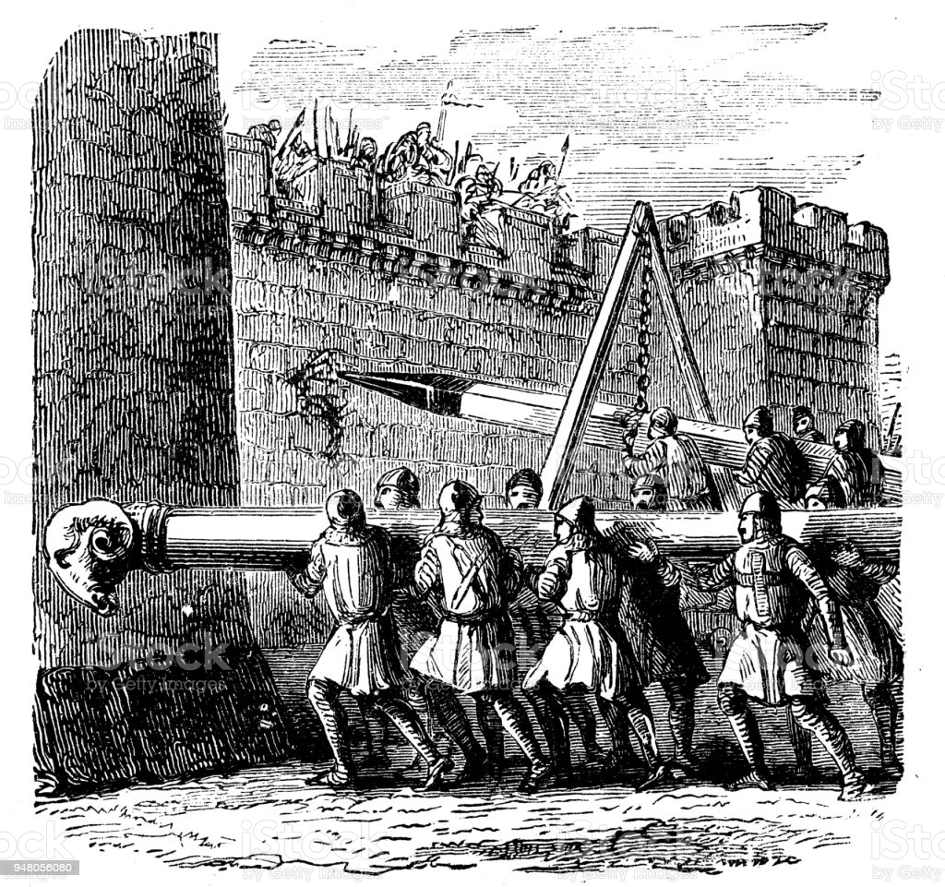 Battering rams are used to create a breach in the wall. To do this, the attackers roll a machine, sometimes protected by a sturdy roof, up to the wall, after which they push a huge beam inside with the aid of a winch, and then let it slam against the wall with a tremendous swing. When this beam strikes again and again, it loosens any masonry. The head of the beam is often reinforced with iron work. This machine is a formidable danger, against which almost nothing can be done.
Battering rams are used to create a breach in the wall. To do this, the attackers roll a machine, sometimes protected by a sturdy roof, up to the wall, after which they push a huge beam inside with the aid of a winch, and then let it slam against the wall with a tremendous swing. When this beam strikes again and again, it loosens any masonry. The head of the beam is often reinforced with iron work. This machine is a formidable danger, against which almost nothing can be done.
The cat
Also not to be underestimated is the undermining of the walls. Cats are used to protect the diggers. These consist of light, low and elongated constructions, usually made of wood or braided twigs on all sides. The only defense against this is to set them on fire.
The equally high or siege tower
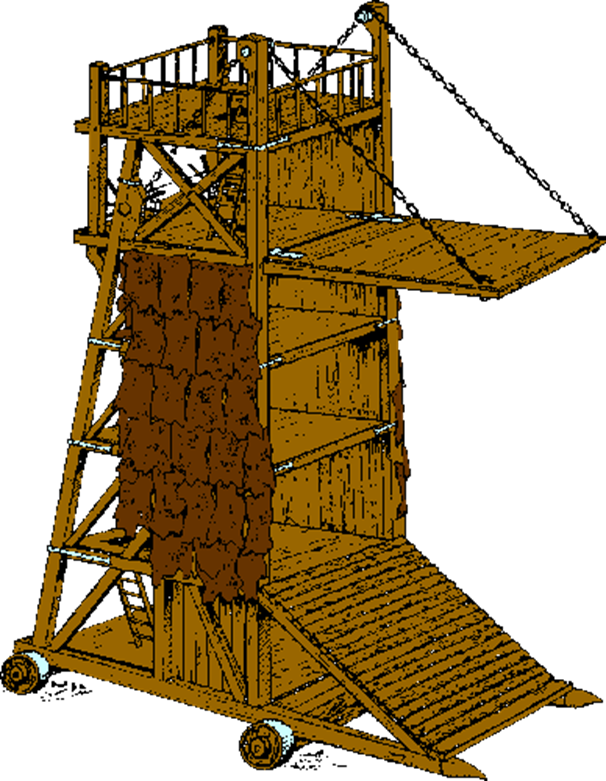 The equally high one looks dangerous. This siege tower is as high as the wall of the fortress. Usually such a tower consists of three or more floors; it is made from wood by carpenters from the army bunch on site. This colossus is rolled against the enemy stronghold, after which the besiegers jump on the wall. In order to prevent a fire of the same height, it is often still covered on the outside with hides, which are kept wet.
The equally high one looks dangerous. This siege tower is as high as the wall of the fortress. Usually such a tower consists of three or more floors; it is made from wood by carpenters from the army bunch on site. This colossus is rolled against the enemy stronghold, after which the besiegers jump on the wall. In order to prevent a fire of the same height, it is often still covered on the outside with hides, which are kept wet.
Throwing machines, trebuchet and joyful ones
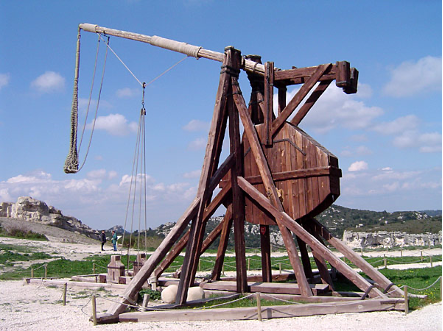 Trebuchet .
Trebuchet .
What he looks like
How it works
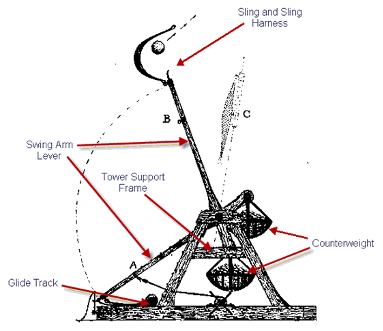 In the Middle Ages, especially the throwing machines (jole and trebuchet) played a very important role in siege warfare. These machines can be regarded as forerunners of the artillery. In order to stay out of the range of the arrows of the defenders, who reach 250 meters from their walls, the throwing distance must be significantly greater
In the Middle Ages, especially the throwing machines (jole and trebuchet) played a very important role in siege warfare. These machines can be regarded as forerunners of the artillery. In order to stay out of the range of the arrows of the defenders, who reach 250 meters from their walls, the throwing distance must be significantly greater
As projectiles, both heavy and small stones (hail), burning fire barrels and beehives, as well as animal carcasses, contents of latrines and other disease-propagating objects were thrown into the besieged fortress.
The defenders also sometimes placed throwing machines on the walls and towers, but these could usually be few and limited in size due to the available space.
the happy one
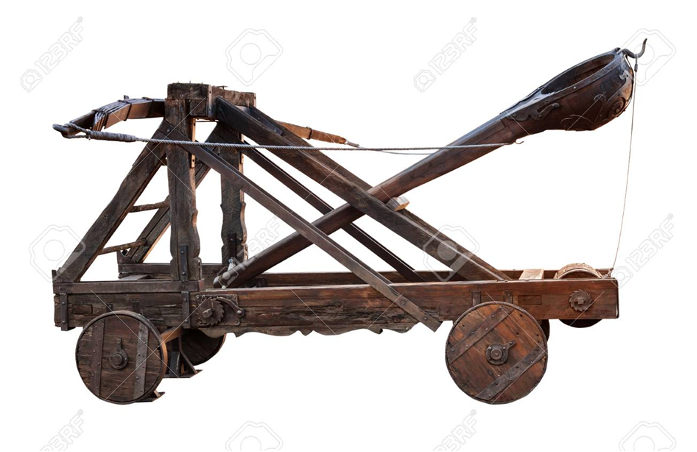 The glad one belongs to the heddle gun. The throwing power is obtained by a kind of seesaw. At one end was a heavy weight and at the other the so-called shoe. This throwing gun casts the most accurately, because the weight always works evenly. With this machine, as a medieval source tells us, the gunner can hit a needle.
The glad one belongs to the heddle gun. The throwing power is obtained by a kind of seesaw. At one end was a heavy weight and at the other the so-called shoe. This throwing gun casts the most accurately, because the weight always works evenly. With this machine, as a medieval source tells us, the gunner can hit a needle.
the blunderbuss
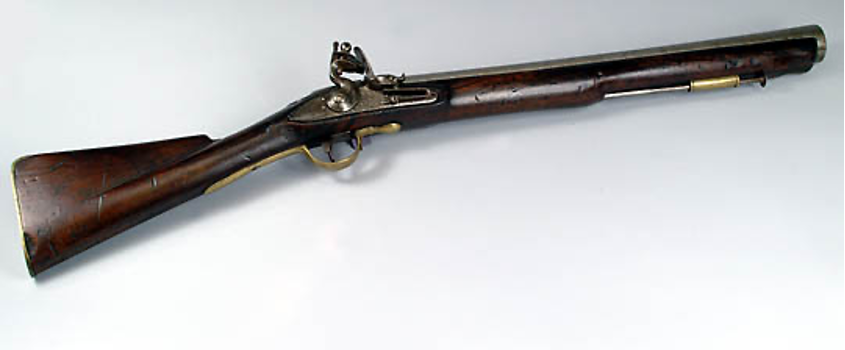 , initially called 'donrecruyt' (thunderpowder), was discovered in the mid-thirteenth century and used in Europe from the early fourteenth century as a propellant for firing projectiles from a firearm.
, initially called 'donrecruyt' (thunderpowder), was discovered in the mid-thirteenth century and used in Europe from the early fourteenth century as a propellant for firing projectiles from a firearm.
The Chinese are already using the gunpowder to shoot clay balls from a bamboo tube closed on one side.
Arabs improve the system by taking more gunpowder and making a tube of iron.
In the first half of the fourteenth century, the manufacture and use of firearms spread slowly throughout Europe.
In 1346, the first donrebuses, also known as pot dogs, appear in the low countries. The first types of artillery are usually very small in size and have the shape of a vase or pot.
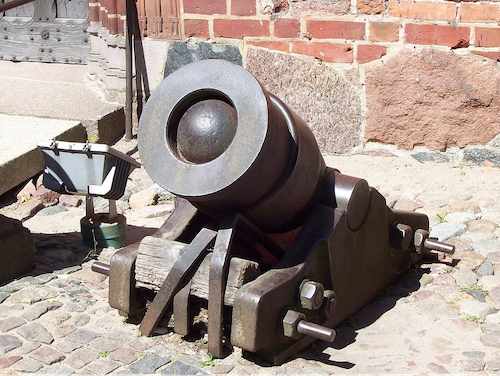 When fired, they are supported in the sand and positioned so that they are at a 45° angle. They are front loaders, so the powder goes in first. Then a wooden plug is smashed into the constriction and the projectile is placed in front of it. The gunpowder is ignited by holding a burning fuse or glowing piece of iron near the sun hole. So both the projectile and the wooden plug are fired. It is not clear what kind of projectiles were used; heavy arrows and stones are most likely. Fast shooting is also not included. Only a few shots a day are possible and even then the barrels often crack when fired.
When fired, they are supported in the sand and positioned so that they are at a 45° angle. They are front loaders, so the powder goes in first. Then a wooden plug is smashed into the constriction and the projectile is placed in front of it. The gunpowder is ignited by holding a burning fuse or glowing piece of iron near the sun hole. So both the projectile and the wooden plug are fired. It is not clear what kind of projectiles were used; heavy arrows and stones are most likely. Fast shooting is also not included. Only a few shots a day are possible and even then the barrels often crack when fired.
the arquebus The first hand weapons, the hand and arquebuses, are developed from this first artillery, after which the name thunder powder is also replaced by gunpowder. However, due to the primitive processing and the impurity of the components, the gunpowder is still very unstable in the fourteenth century, so that its strength and thus the trajectory of the projectile cannot be determined exactly. Yet the effect of the violent explosion, the fierce flash of light and the strong smoke development on the superstitious medieval man should not be underestimated. In the panic that often arises when the enemy army appears in front of its own familiar gates, the blunderbuss is the novelty that makes all faith in the war's end disappear.
The first hand weapons, the hand and arquebuses, are developed from this first artillery, after which the name thunder powder is also replaced by gunpowder. However, due to the primitive processing and the impurity of the components, the gunpowder is still very unstable in the fourteenth century, so that its strength and thus the trajectory of the projectile cannot be determined exactly. Yet the effect of the violent explosion, the fierce flash of light and the strong smoke development on the superstitious medieval man should not be underestimated. In the panic that often arises when the enemy army appears in front of its own familiar gates, the blunderbuss is the novelty that makes all faith in the war's end disappear.





